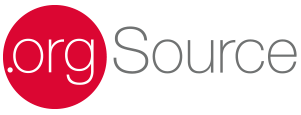Fast Track Your Way to Innovation

Is your association innovative enough to survive in the roaring twenties? Before you answer, name three strategies you use to promote creative thinking. If they don’t roll off your tongue, consider this:
- Blockbuster— had a chance to buy Netflix and didn’t.
- Toys R Us—let a contract with Amazon derail their ecommerce opportunities.
- Xerox—never capitalized on the many breakthrough technologies developed at its Palo Alto Research Center.
Some readers might believe these cautionary tales don’t apply to associations. Associations are about mission before value, right? They don’t have shareholders anticipating big gains. There are organizations with a century of progress under their belts that are doing just fine. With competent governance and administration, the time-honored strategies for success don’t change.
Clinging to those ideas is like hugging a rattlesnake. It will bite you, and it might be fatal.
As you read, you might be asking:
- Why is innovation so important?
- What association has the resources to produce a constant stream of new products and services?
- Doesn’t it make more sense to focus on operating efficiently and delivering quality customer service?
The short answer is without an innovative approach it will be challenging to perform at the level the marketplace demands. The consumer environment is filled with options and opportunities. Buyers increasingly control what, when and how they make a purchase. (Think on demand CE from experts across the globe or products, such as glasses or shoes, that can now be easily customized for color and design.) Online networking and conferencing are creating new avenues for collaboration just as rapidly. To engage the next generation of professionals, associations need to match the convenience of those experiences.
The longer response is that innovation is about more than making new stuff. It’s an attitude that constantly seeks opportunity and advantage through problem solving. Rolling out a new educational podcast because that’s what is trending is far from the point. But if the initiative answered a challenging question or delivered greater member value and you used research, data testing and iteration to guide the decision-making, that process puts you in the right zone. Promoting intellectual curiosity and giving creativity the encouragement and recognition to thrive are among the defining characteristics of an innovative organization.
Maximize Talent

Growing a culture that embraces risk, experimentation and creativity in an organization that clings to rules and procedures might seem like a tall order. But you don’t need to recruit a team of mad geniuses who will demand an in-house yoga instructor and a dog-friendly workplace. Creating an environment where problem-solving is valued and brainstorming is encouraged, even when it is disruptive, can be incremental.
The easiest place to start building a more innovative team is by identifying the talent that already exists in your organization. Aligning employees correctly with their abilities and interests sounds painfully obvious. But my real-world experience suggests that restructuring and hires that are driven by economy or expediency are common. It takes discipline to resist filling an empty position until the right candidate is identified.
When I begin a project with a new client, I typically interview the staff. The goal is to understand their skills, uncover where their enthusiasm lies and determine who will be best suited for the job at hand. This is exciting because I often discover diamonds in the rough, or people who are being underutilized in their current capacity. Not so gratifying, but equally insightful, is finding people who are either underqualified or uninterested in their assigned roles.
The ability to see things differently requires effort. Employees who are ill equipped for or uninspired by their work won’t be motivated to extend themselves creatively.
Promote the Right Values and Behavior
There are specific values and behaviors that promote an innovative culture. These must be shared by everyone from the board chair to the receptionist. Examples include:
- Problem solving is expected
- A good idea can come from anyone in the organization
- The status quo has no intrinsic merit
- Programs, products and processes must be scrutinized for relevance and value. Initiatives that have outlived their usefulness must be sunset
- Calculated risk is acceptable
- Experimentation is encouraged
- Purpose trumps perfection
Embracing these concepts begins with the CEO and management team. They are responsible for ensuring that staff feel safe supporting ideas that may be inconvenient or unconventional. CEOs may need to work with their boards to introduce strategies for greater risk tolerance and to dispel the notion that perfection is the only acceptable outcome for new initiatives. Data is a powerful tool in this process. Collecting and analyzing as much information as possible around an issue helps decision makers to take a leap of faith.
Implement Creative Strategies

There are many ways that organizations can offer opportunities for innovation, from providing dedicated time in meetings for brainstorming to designating specific people as innovators or even creating a department that functions as a think tank.
Design thinking is a framework that is being used in some organizations to support the innovative process. This problem-solving methodology has only recently emerged on the association horizon. It centers around developing a deep, empathetic understanding of your constituents, and through a process of experimentation and iteration, building what they want and need.
The concept of a minimum viable product (MVP) is another strategy organizations can employ to become comfortable with testing and risk. Entrepreneurs often use an MVP to get a product to market quickly with the idea that they may be several steps away from a final version. The MVP is a prototype that will be refined and upgraded based on its success and consumer feedback. If the idea is flawed or the timing is wrong, an MVP allows for a quick retreat without a substantial investment of resources.
Innovation requires a budget. Some organizations create a special line dedicated to research and development. Others designate money from reserves for this purpose. The point is to set aside the funding for growth.
Be Brave
Fear is the most common roadblock to innovation and the easiest to overcome. During a recent interview, Amith Nagarajan, Executive Chairman, rasa.io, Chairman of the Board of Association Success Corporation, advised, “The invisible barrier is fear of dipping a toe in the water. What I recommend is picking a simple project with the idea that the only goal is to learn. Put a chatbot on your website and see what happens. Implement an AI newsletter and see how it performs. Pick something simple that you can do quickly and learn from. Don’t spend six months debating what to do with the board and volunteers. Just test and evaluate.”
I echo that advice. Those three strategies to stimulate creativity that I mentioned at the top of this post—that’s a good place to start. Innovation has its own momentum. Once the ball starts rolling, it’s difficult to stop.
